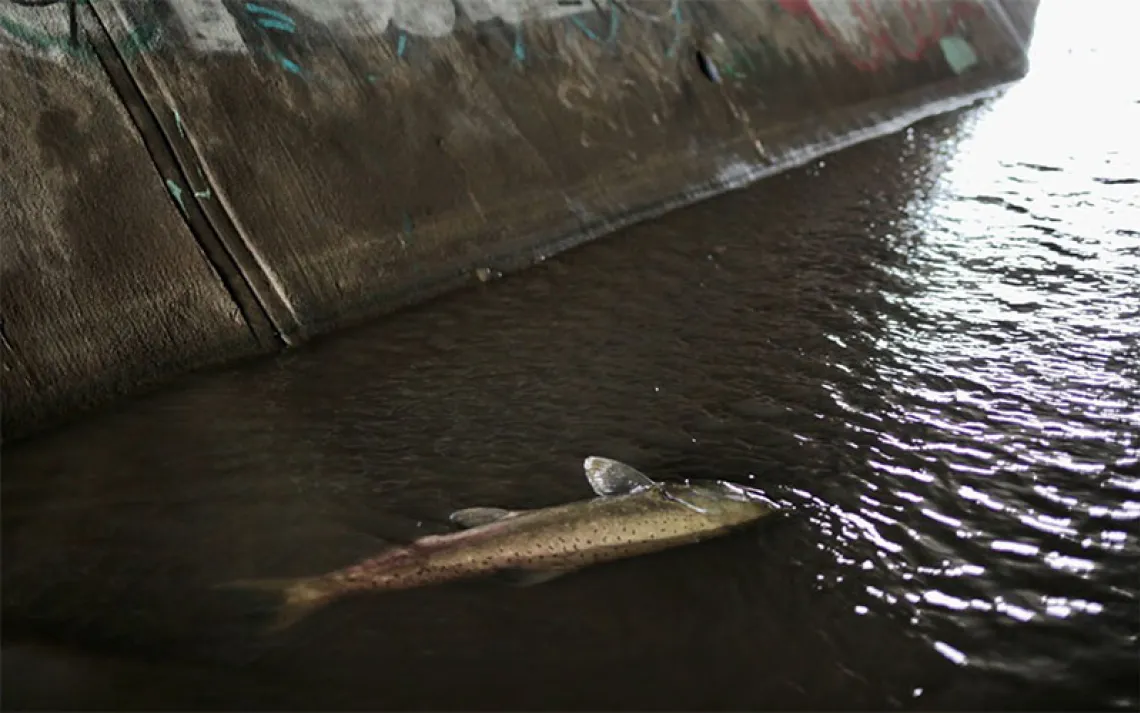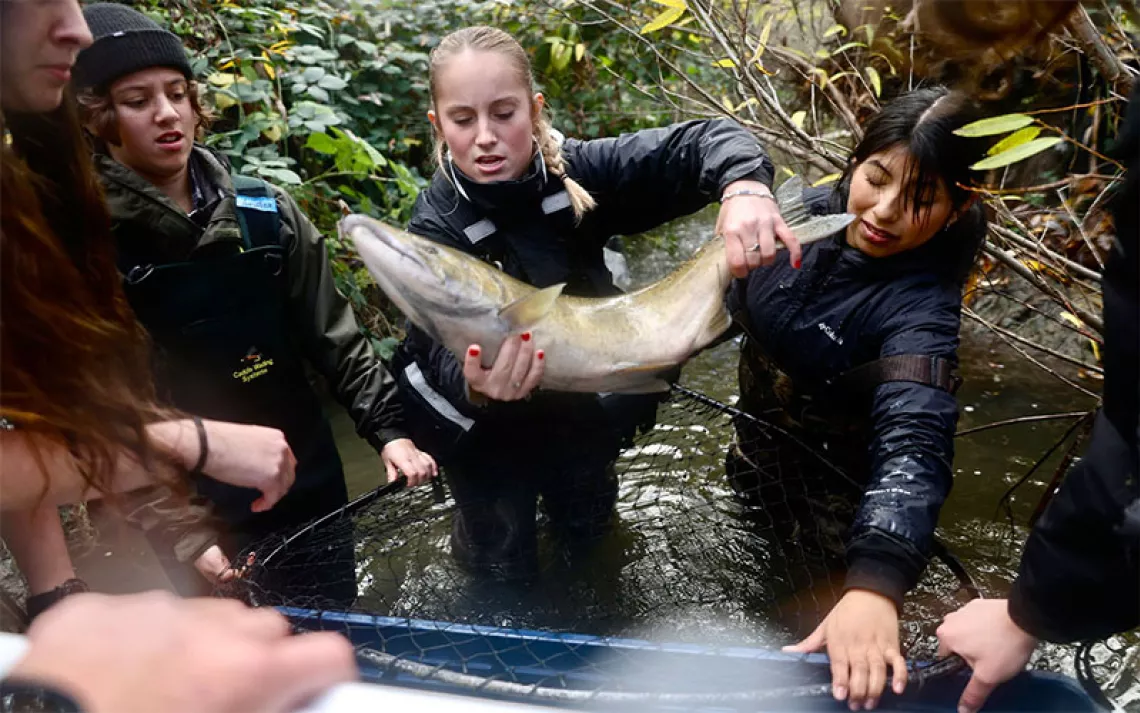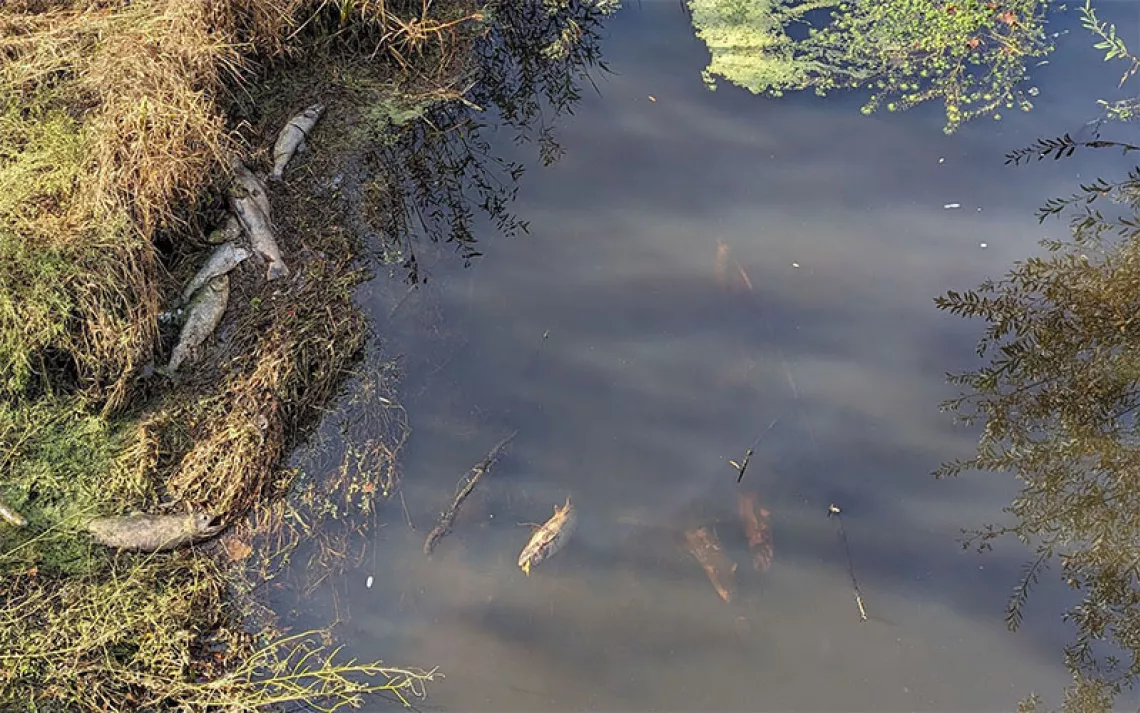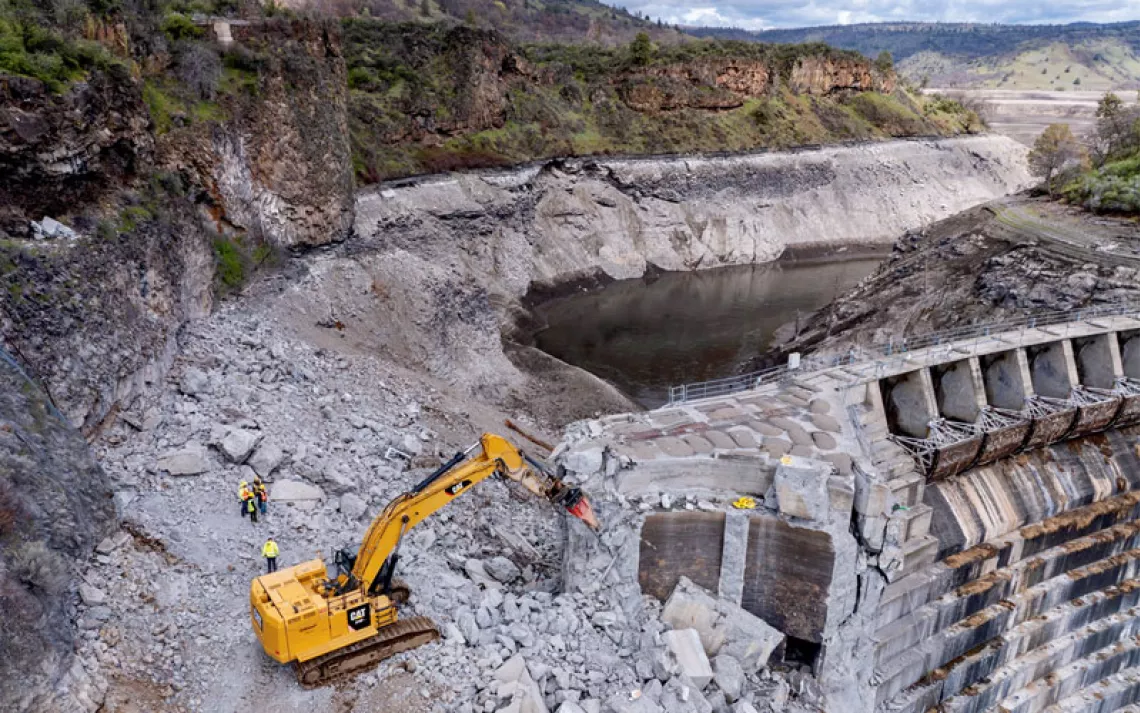Why Were So Many Species of Mussels Just Declared Extinct?
Dams, pollution, and invasive species are all big threats

Photo by Susi Von Oettingen/US Fish and Wildlife Service
I have a small confession: It’s hard for me (despite my last name) to take mussels seriously. They’re easy to miss—unless you split your heel stepping on a Carolina heelsplitter—and the names can border on ridiculous, like the sugarspoon, fat pocketbook, and white wartyback pearlymussel. Even the people who devote their careers to mussels sometimes call them “rocks with guts.”
But mussels are a huge part of North America’s natural heritage: With over 300 species, the US has the highest number of freshwater mussels in the world. Most of these are found in the Southeast, where the endlessly branching streams of the Mississippi and Ohio River systems gave the ancestral mussels an opportunity to drift apart and evolve. They’re also a food source for river animals and key members of the ecosystem. Their ability to filter muck and pollution out of the water has earned them the title of “the liver of the river.”
Unfortunately, mussels are in trouble. Over a third are listed as endangered or threatened, and many have already been wiped out. The Center for Biological Diversity has called freshwater mussels “the most endangered organisms in North America." Of the 23 species that the US Fish and Wildlife Service just declared extinct, eight of them were types of mussels. The process of declaring a species extinct takes a long time, and the fate of these mussels was likely sealed decades ago. It’s been 41 years since anyone saw the flat pigtoe mussel, for example.
So what happened? I spoke with three Fish and Wildlife mussel scientists to find out.
*
The experts say dams are the main culprit. The structures heat the water at the top of the river and create oxygen-starved dead zones at the bottom, and they also harm native fish. To understand why that’s a problem for mussels, you need to know how they reproduce.
“Freshwater mussels have got kind of a unique life history, where they're a parasite during at least one portion of their life,” says Andy Ford, a biologist at the Tennessee Ecological Services Field Office. Male mussels spray sperm into the water, and females catch it downstream, where they fertilize their eggs to make larvae, also called glochidia.
Next, the female catches a fish’s attention using a lure that looks like a worm, a crayfish, or even a smaller fish in the case of the plain pocketbook mussel. When the fish bites down, the mussel shoots a glob of larvae into the fish’s mouth, where they attach to the gills. Since mussels don’t have fins of their own, this is how they travel upstream. Even if all goes well, the mussel may be dropped off in a place it can’t survive. “It's got a lot going against it,” says Ford. “Female mussels produce hundreds of thousands of young because the chances of completing this cycle are so low.”
Dams make these odds even slimmer by blocking host fish from swimming upstream and reducing their numbers. We don’t know the host species for any of the eight mussels just declared extinct, but they were likely specialists who were adapted to one or a few particular fish, Ford says. Dams also interrupt and change the flow of the river, which causes problems for mussels that are adapted to riffles, or shallow, rippling stretches of river. When the Army Corps of Engineers dammed and straightened Alabama’s Tombigbee River in the 1970s, they wiped out miles of habitat for mussels, including the now-extinct stirrupshell and flat pigtoe.
“You’ve got so many moving parts that have to be synchronized in order to be successful,” says Tyler Hern, hatchery manager at Erwin National Fish Hatchery. “You interrupt just one link of that big, long chain of things, and it can have catastrophic effects.”
North America’s native mussels are also battling invaders. To illustrate the point during our Zoom call, Hern reached into a cabinet and pulled out a six-inch fragile papershell mussel that had been overrun by an armada of tiny striped zebra mussels. Death had frozen the “zebs” and their host in an eerie tableau. Hern could tell by the placement of two holes that despite everything, the fragile papershell had managed to poke its siphons through the cluster to eat and breathe.
Zebra mussels are thought to have arrived in the 1980s, when a ship coming from Europe dumped its ballast water into the Great Lakes. It’s unlikely that they played a role in driving the just-announced mussels extinct, but other invasives arrived earlier. The Asian clam was first detected in the 1930s, and now “it's in just about every stream that you could put your feet in,” Ford says. Invasive mussels smother natives like the fragile papershell, and they outcompete them for phytoplankton, their main food source.
Invasive fish are a problem too, especially Asian carp, which were brought to US fish farms in the 1970s and slipped out of their pens. The black carp is a menace for native mussels, says Matthew Wagner, a biologist at the Mississippi Ecological Services Field Office. The fish can grow as large as five feet, and they have a special set of teeth perfectly shaped for crushing mussels. “It’s a scary thing, because what do fish do all day?” says Wagner. “They eat and they reproduce.”
Overharvesting has also played a role in the mussel’s demise. Evidence of human-caused decline in the Midwest dates back more than a thousand years, but in the early 20th century, it became especially severe. At the time, the Midwest was the world's top producer of mussel-shell buttons.
Shellers caught mussels en masse using “brail hooks,” twists of wire tied to the end of ropes or chains, which they dragged along the bottom of the river. When a hook brushed against a mussel’s innards, the shell snapped shut and the shellers hauled it up. The industry was lucrative but also an ecological disaster. By 1905, Muscatine, Iowa alone was producing 1.5 billion buttons from mussel shells. In Lake Pepin, Minnesota, the mussel harvest fell from over 3,000 tons to 150 tons in the space of 15 years.
The list of dangers for mussels has only gotten longer. For a filter-feeder, pollution of every kind is a threat, including farm fertilizer, pesticides, and heavy metals from coal mining and industrial waste. Scientists expect that worsening droughts, storms, and floods caused by burning fossil fuels will damage mussel habitat, and warming water can interfere with their reproduction. Mussel die-offs in recent years might be caused by new diseases.
Muddy rivers are an especially pressing issue, says Tierra Curry, a senior scientist at the Center for Biological Diversity. A certain amount of mud in the water is normal, but forestry, farming, construction, and off-road vehicle trails produce too much sediment runoff, which can smother mussel beds. “It’s this huge problem that really needs to be addressed, and there's a thousand solutions for it,” says Curry. These might include making sure construction sites use silt fences and stepping up enforcement of trail boundaries, she says.
The situation is already precarious for species like the southern combshell, which is now found in only one of its native rivers in Mississippi, the Buttahatchee. Wagner and others are working to reintroduce it to other areas, but “if there's a spill in this one river, like if a railroad car tips over, it would take out this whole population,” he says. Five more species have recently been nominated for the endangered species list: the Atlantic pigtoe, the Canoe Creek clubshell, the pyramid pigtoe, the longsolid, and the round hickorynut.
In the early 20th century, the US mussel fishery became so depleted that the Bureau of Fisheries established a program to breed the shiny mollusks. The technique worked, but not fast enough. “Even though they were successful ... there was no way to keep up with the harvesting rates,” says Hern. But the research didn’t go to waste. In the past couple decades, Hern says, mussel propagation has made a comeback, this time as a way to rescue endangered mussels.
At the Erwin National Fish Hatchery, Hern and others are researching new ways of growing and planting endangered mussels. Once the mussels make it to the adult stage, their chances of survival climb to about 90 percent, says Hern.
The work is supported by private landowners, nonprofits, and researchers in neighboring states, and Hern calls this network a “recovery machine.” “If we can get enough animals into it, we have a pretty good chance of making some progress,” he says. “It’s just finding them before they're gone.”
 The Magazine of The Sierra Club
The Magazine of The Sierra Club



